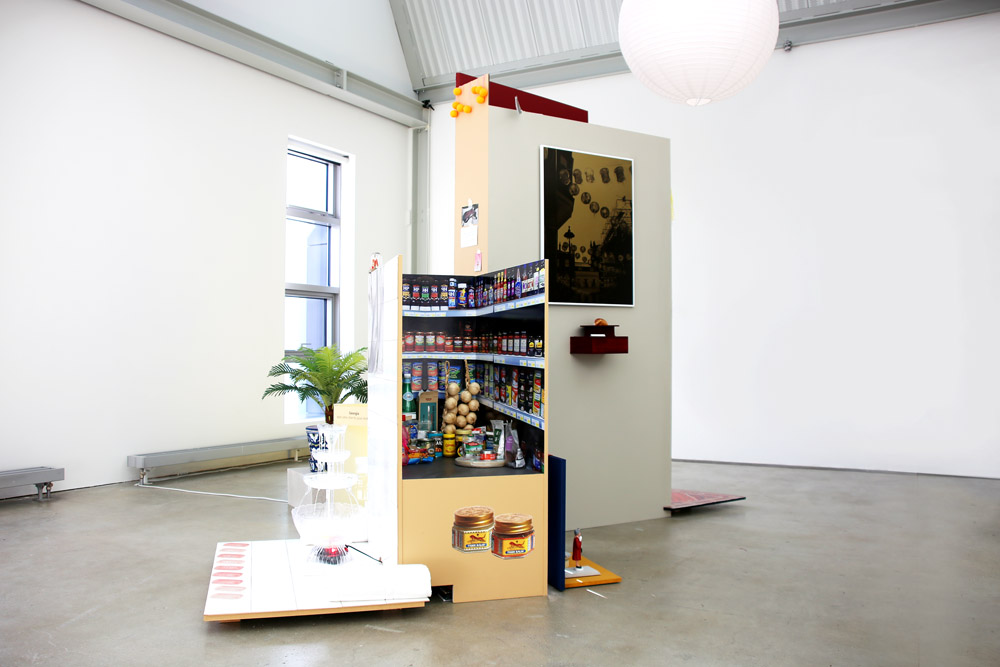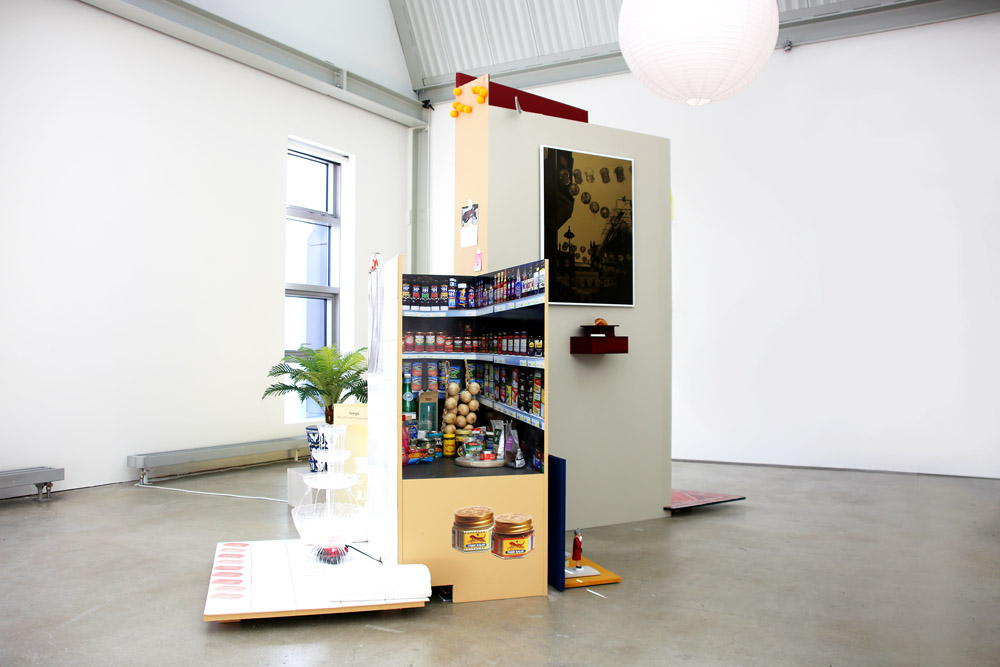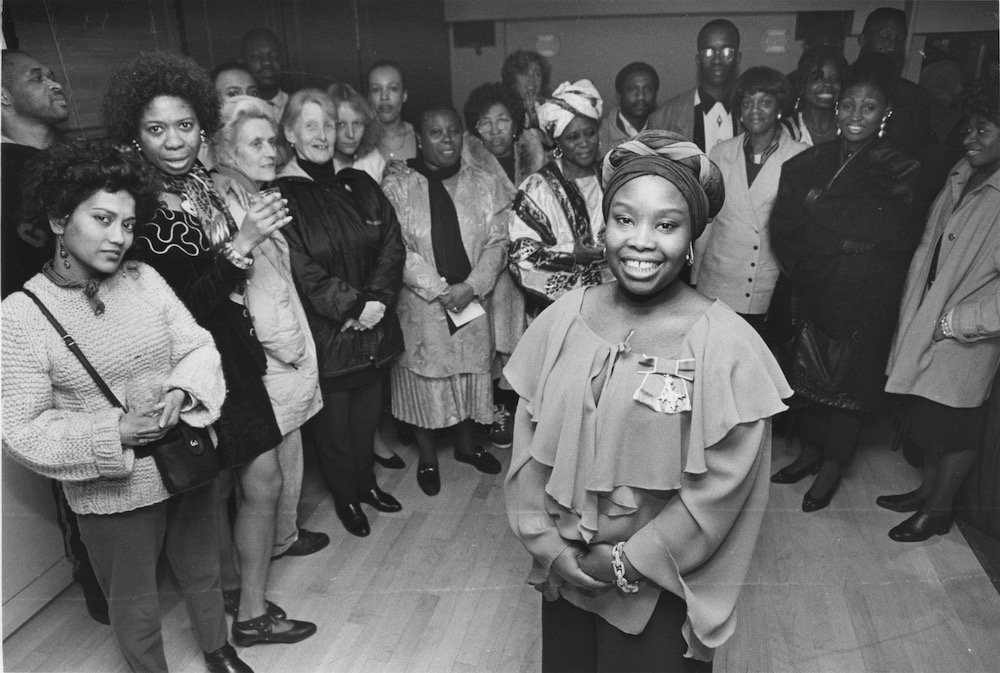[ad_1]
Dating back to 1949, the hotly anticipated annual “Bloomberg New Contemporaries” show provides a rare opportunity to see a large group of recent graduates of major British art schools in a museum context. And this year’s edition was particularly notable: for the first time in a decade, it traveled to South London Gallery, with guest judges Benedict Drew, Katy Moran, and Keith Piper selecting 57 artists from an open call, without a preselection and without seeing the applicants’ details. Presented over multiple floors and across both SLG sites in Peckham, the rooms overflow with a wide array of 2D pieces, sculpture, mixed media, acrylic, drawings, video, and prints, but only a few artworks leap to the eye.
In the SLG’s main gallery, Royal College of Art alum Heidi Maribut’s IMPORT IN(CHOIR)Y (2017) is an installation poking fun at the irony of the idea of “British purity” by highlighting readily apparent immigrant influences in the U.K. As Maribut put it in a statement, “while borders might be closed, material goods flow freely into our counties, cities, shops, and homes.” (Though such exchange may be a bit less smooth post-Brexit.) British media, imported produce, and the souvenirs one finds on sale around London all boast of multiculturalism in the U.K., whether wittingly or unwittingly. Maribut’s multimedia piece is arrayed around a large column wrapped with vinyl wallpaper picturing the “world foods” aisle in a supermarket. Among the inventory are actual containers of curry spices, coconut oil, soy sauce, and Tiger Balm. Here, too, are cheap ceramics celebrating the royal family, an old radio playing the BBC Asian Network, Persian-style rugs, and decorative net curtains. A text on the towering column reads: “BBC as in BRITISH BORN CHINESE. BBC as in BREEDING of BRITISH CULTURE. BBC as in BRINGING BACK COLONIES.”
A brief but impactful documentary, Street 66 (2018), by filmmaker Ayo Akingbade, is showing upstairs in the SLG’s newly opened Fire Station building. A graduate of London College of Communication, Akingbade made the film using first-hand interviews, archival footage, and material she shot of the residents of the nearby Angell Town Estate in Brixton, South London. Over the course of 13 minutes, the diligence and dedication of the Ghanaian-British housing activist Dora Boatemah—who lived to be only 43—is presented, likely reaching many viewers for the first time. Boatemah was a leading force in the rehabilitation of the notorious social housing estate, built in 1974, that had deteriorated through crime, vandalism, and drug use fueled by extreme poverty. In a decadelong fight against the then Conservative government, Boatemah established the Angell Town Community Project for community-controlled redevelopment between 1987 and 2000, and secured £8 million worth of grants and sponsorships. Akingbade affirms Boatemah’s legacy and recounts her hopes for the self-determined community residing in Brixton.
New Contemporaries, the organization behind the show, offers practical support for emerging artists in the U.K. with one-to-one and peer mentoring, grants for studios, access to residencies, and exhibition and performance fees for the individuals with whom it works. With London’s rising cost of living, not to mention studio space and professional development, graduates are rarely afforded the life of a “working artist.” New Contemporaries meets young artists halfway at this critical point in their career. What might the arts look like if more assistance like this were available, especially to those who don’t graduate from top British art schools?
[ad_2]
Source link



